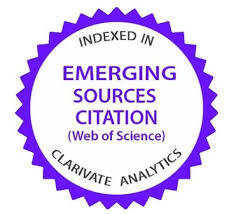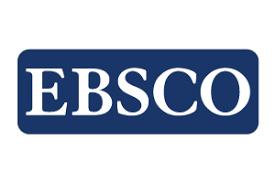Gender and desertification: Conceptual and programmatic links
DOI:
https://doi.org/10.35197/rx.12.01.e1.2016.13.vvKeywords:
land degradation, gender equality, environmental policy, UN, conventionsAbstract
At the 1992 Earth Summit, three conventions were created to counter the global environmental crisis: the United Nations Framework Convention on Climate Change, the Convention on Biological Diversity, and the United Nations Convention to Combat Desertification. This article focuses on the latter, with the aim of building bridges between desertification and the gender perspective. First, both terms are defined to establish conceptual links between them. Subsequently, various United Nations documents that refer to gender equity are analyzed, as well as the efforts to incorporate it into the Convention to Combat Desertification. It is concluded that this is the most advanced of the three in integrating the gender perspective. However, it is still necessary to move from verbal commitment to concrete actions.
Downloads
References
Agarwal, B. (1994). Gender, resistance and land-interlinked struggles over resources and meanings in South Asia. Journal of Peasant Studies 22(1): 82-125.
Agarwal, B. (2004). El debate sobre género y medio ambiente: lecciones de la India. En: Vázquez,
V. & M. Velázquez, (Eds.), Miradas al futuro. 239-272. UNAM, CP, IDRC, México D.F.
Armendáriz, C. R. E., Johnson, M., Zuk, M., Rojas, L., Díaz, R. R., R. H. y Masera, O. (2008). Reduction in personal exposures to particulate matter and carbon monoxide as a result of the installation of a Patsari improved cook stove in Michoacan, Mexico. Indoor Air 18: 93– 105.
Banana, A., Bukenya, M., Arinaitwe, E., Birabwa, B. y Ssekindi, S. (2012). Gender, tenure and community forests in Uganda. Working Paper 87, CIFOR. Bogor, Indonesia.
Banco Mundial. (2009). Género en la agricultura. Banco Mundial. Washington D.C.
Blanco, M. y Velázquez, M. (2003). De aciertos y desiertos. Equidad de género en ecosistemas de tierra seca. Editorial Absoluto. San José, Costa Rica.
Berrueta, V. M., Edwards, R. D. y Masera, O. (2008). Energy performance of wood-burning cookstoves in Michoacan, Mexico. Renewable Energy 33: 859–870.
Bose, P. (2011). Forest tenure reform: exclusion of tribal women’s rights in semi-arid Rajasthan, India. International Forestry Review 13(2): 220-232.
Boserup, E. (2007). Women´s role in economic development. Earth Scan. Virginia, EUA.
Convención de las Naciones Unidas de Lucha contra la Desertificación (CNULD). (2008). El marco y plan estratégico decenal para mejorar la aplicación de la convención. Disponible en: http://www.unccd.int/Lists/SiteDocumentLibrary/10YearStrategy/Strategy-leaflet-spa.pdf (25 de septiembre de 2013).
Convención de las Naciones Unidas de Lucha contra la Desertificación (CNULD). (2011ª). Desertificación. Una síntesis visual. Disponible en: http://www.unccd.int/Lists/SiteDocumentLibrary/Publications/Desertification-SP.pdf. (23 de septiembre de 2013).
Convención de las Naciones Unidas de Lucha contra la Desertificación (CNULD). (2011b). Draft advocacy policy framework on gender. Disponible en: http://www.unccd.int/en/programmes/Thematic-
Priorities/gender/Documents/CRIC10_20_Gender_DraftAdvocacyPolicyFramework.pdf (25 de septiembre de 2013).
Convenio sobre la Diversidad Biológica (CDB). (2010). Guía para la transversalización de género en las estrategias nacionales de biodiversidad y planes de acción. Serie Metodológica 49. Secretaria de la Convención sobre Diversidad Biológica. Montreal, Canadá.
Cordes, L. (2011). Igniting Change: Una Estrategia para la Adopción Universal de Estufas y Combustibles Limpios. Alianza Global para Estufas Limpias. Washington D.C.
Eade, D. y Williams, S. (1995). The OXFAM handbook of development and relief. OXFAM Londres. El Porvenir. (2011). Política de género, vital para la desertificación: ONU Disponible en:
http://www.elporvenir.com.mx/notas.asp?nota_id=533345#.UjJIlvrA2sw.facebook (25 de
septiembre de 2013).
Empaform. (2006). Participatory forest management initiatives in Uganda: key implementation concerns and recommendations for policy actions. Briefing Paper No. 1, Empaform. Kampala, Uganda.
FAO. (1999). Marco estratégico para la FAO 2000-2015. FAO. Roma.
FAO. (2012). Invisible guardians. Women manage livestock diversity. FAO. Roma.
Gabaldón, A. J. y Rodríguez, M. (2002). Evolución de las políticas e instituciones ambientales: ¿Hay motivos para estar satisfechos? En: Leff, E., E. Ezcurra, I. Pisanty & P. Romero Lankao, (Comps.), La transición hacia el desarrollo sustentable. 35-60. SEMARNAT, UAM, PNUMA, México D.F.
Graña, M. (2007). Un aliado de la vida pide auxilio. Ciencia 15(5):1-6.
Guimaraes, R. y Bárcena, A. (2002). El desarrollo sustentable en América Latina y el Caribe desde Río 1992 y los nuevos imperativos de institucionalidad. En: Leff, E., E. Ezcurra, I. Pisanty &
P. Romero Lankao, (Comps.), La transición hacia el desarrollo sustentable. 15-34. SEMARNAT, UAM, PNUMA, México D.F.
Johnson, M., Edwards, R., Alatorre, C. C. y Masera, O. (2008). In-field greenhouse gas emissions from cookstoves in rural Mexican households. Atmospheric Environment 42:1206–1222.
Jungehülsing, J. (2010). Las que se van, las que se quedan: reacciones frente al cambio climático. Un estudio de caso sobre migración y género en Chiapas. Heinrich Böll Stiftung. México D.F.
Laako, H. (2012). Migración, violencia y cambio climático en Chiapas, México: Vulnerabilidades y estrategias de adaptación de las Mujeres. UNESCO. San Cristóbal de las Casas, México.
Lambrou, Y. y Laub, R. (2004). Gender Perspectives on the Conventions on Biodiversity, Climate Change and Desertification. FAO. Roma.
Leach, M., Joekes, S. y Green, C. (2004). Las relaciones de género y el cambio ambiental. En: Vázquez, V. & M. Velázquez, (Comps.), Miradas al futuro. 289-305. UNAM, CP, IDRC, México D.F.
Lewark, S., George, L. y Karmann, M. (2011). Study of gender equality in community based forest certification programs in Nepal. International Forestry Review 13(2): 195-204.
López, F. (2008). Género y la lucha contra la desertificación. Disponible en: http://www.cimacnoticias.com.mx/documentos2008/bienescomunesboll2008/generoluch adesertificacion.PDF (24 de septiembre de 2013).
Mai, Y. H., Mwangi, E. y Wan, M. (2012). Gender analysis in forestry research. Looking back and thinking ahead. CIFOR Infobrief 51:1-6.
Mies, M. y Shiva, V. (2004). Del por qué escribimos este libro juntas. En: Vázquez, V. & M. Velázquez, (Comps.), Miradas al futuro. 71-94. UNAM, CP, IDRC, México D.F.
Morales, C. (2005). Pobreza, desertificación y degradación de tierras. En: Morales, C. & S. Parada (Eds.), Pobreza, desertificación y degradación de los recursos naturales. 25-58. CEPAL, Santiago de Chile.
Mukasa, C., Tibazalika, A., Mango, A. A. y Muloki, H. (2012). Gender and forestry in Uganda: policy, legal and institutional frameworks. Working Paper 89. CIFOR. Bogor, Indonesia.
Mutepfa, F. (s/f). La desertificación tiene rostro de mujer. En: Nuestro Planeta. Desiertos y tierras secas Kenia 17(1):14-15.
Organización de Naciones Unidas (ONU). (1994). Convención de Lucha contra la Desertificación.
ONU. Nueva York.
Organización de Naciones Unidas (ONU). (2007). Informe de la Conferencia de las Partes sobre su Octavo Período de Sesiones Celebrado en Madrid del 3 al 14 de Septiembre de 2007. ICCD/COP(8)/16/Add.1, 23 de octubre de 2007. ONU. Nueva York.
Programa de Acción Nacional de Lucha Contra la Desertificación (PAN). (2008). El rol de la mujer en la lucha contra la desertificación. En: Periódico 4. Disponible en: http://www.ambiente.gov.ar/archivos/web/DCSyLD/file/Peridico%20Digital/Peridico%20D igital%20n%204.pdf (12 de septiembre de 2013).
Programa de las Naciones Unidas para el Medio Ambiente (PNUMA). (2004). La mujer y el medio ambiente. PNUMA. Nairobi, Kenia.
Rico, M. N. (1997). Género, medio ambiente y sustentabilidad del desarrollo. Ponencia presentada en la Séptima Conferencia Regional sobre la Integración de la Mujer en el Desarrollo Económico y Social de América Latina y el Caribe, Santiago de Chile, 19-21 de noviembre de 1997.
Rocheleau, D. y Edmunds, D. (1997). Women, men and trees: gender, power and property in forest and agrarian landscapes. World Development 25(8): 1351-1371.
Rocheleau D., Thomas, S. B. y Wangari, E. (2004). Género y ambiente: una perspectiva de la ecología política feminista. En: Vázquez, V. & M. Velázquez, (Comps.), Miradas al futuro. 343-372. UNAM, CP, IDRC, México D.F.
Ruiz, L. E. (2010). Cambio climático, pobreza y procesos migratorios en Chiapas, México. Boletín Internacional de Investigación Sindical 2 (2):207-232.
Ruiz, L. E. (2012). Cambio climático y migraciones laborales en la frontera sur de México. Luna Azul
:301-320.
Salazar, H. (1999). Mujer y medio ambiente: acuerdos internacionales. En: Vázquez, V. (coord.). Género, sustentabilidad y cambio social en el México rural. 179-192. Colegio de Postgraduados. Texcoco, México.
Schenerock, A., Kauffer, E. y Ruiz, L. E. (2011). Agenda chiapaneca de las mujeres en agua y cambio climático. Desde la cuenca del Valle de Jovel. Programa de Apoyo a la Mujer, A.C., Agua y Vida, RISAF, SEDESOL, San Cristóbal de las Casas, México.
Schilmann, A., Riojas, R. H., Ramírez, S. K., Berrueta, V. M., Pérez, P. R. y Romieu, I. (2014). Children’s Respiratory Health after an Efficient Biomass Stove (Patsari) Intervention EcoHealth 11(3): 1-9.
Tiani, A. M. (2001). The place of rural women in the management of forest resources: the case of Mbalmayo and neighboring areas of Cameroon. En: Colfer C.J.P. & Byron Y. (Eds.), People managing forests. The links between human-wellbeing and sustainability. 72-89. RFF Press & CIFOR. Washington D.C.
Downloads
Published
How to Cite
Issue
Section
License
Copyright (c) 2016 Verónica Vázquez García

This work is licensed under a Creative Commons Attribution-NonCommercial 4.0 International License.
Usted es libre de:
- Compartir — copiar y redistribuir el material en cualquier medio o formato
- Adaptar — remezclar, transformar y construir a partir del material
- La licenciante no puede revocar estas libertades en tanto usted siga los términos de la licencia
Bajo los siguientes términos:
- Atribución — Usted debe dar crédito de manera adecuada , brindar un enlace a la licencia, e indicar si se han realizado cambios . Puede hacerlo en cualquier forma razonable, pero no de forma tal que sugiera que usted o su uso tienen el apoyo de la licenciante.
- NoComercial — Usted no puede hacer uso del material con propósitos comerciales .
- No hay restricciones adicionales — No puede aplicar términos legales ni medidas tecnológicas que restrinjan legalmente a otras a hacer cualquier uso permitido por la licencia.








